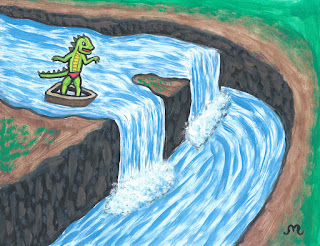Does Fire Have Mass?
History shows us that ability of early humans to create and control
fire helped mankind jump to the top of the food chain. We can simply define fire as a visible effect caused by the chemical process of combustion. Speaking
of fire, does it have mass?
Let's use burning wood as an example: C6H12O6
(wood) + 6O2 (Oxygen)
→ 6CO2 (Carbon Dioxide) + 6H2O (Water).
When wood burns, both the reactants (wood and oxygen) and
the product (carbon dioxide and water) have mass but we don’t see them.
Instead, we see the process as fire and feel it as heat.
In this chemical reaction, carbon dioxide and water persist
as gases due to the high temperature of the flame. This means that the fire
contains carbon dioxide and water, so by extension we can conclude that flames
does have mass.
Essentially, a flame is hot air,
meaning it has a density less than air (around ¼ the density of air). With the
calculations, we can determine that fire weighs about 0.3 kg per cubic meter.
So to solve the question, the flame of a fire does indeed have mass.
Sources:
This blogpost was co-authored by Vraj Patel



Comments
Post a Comment